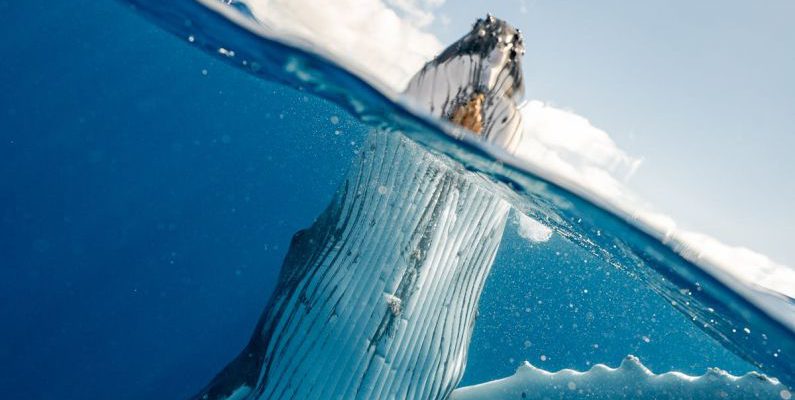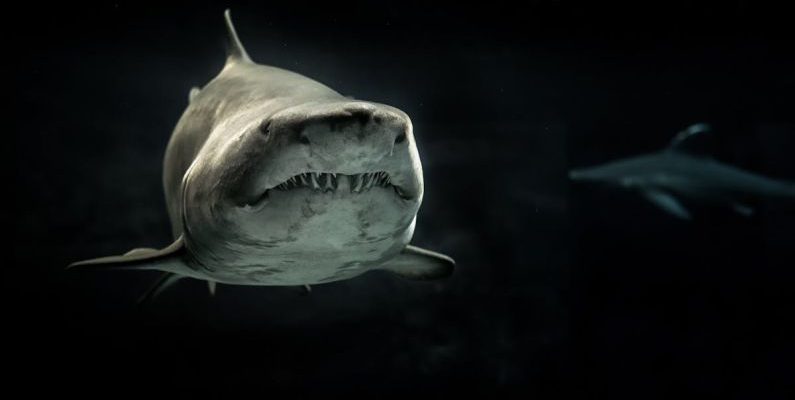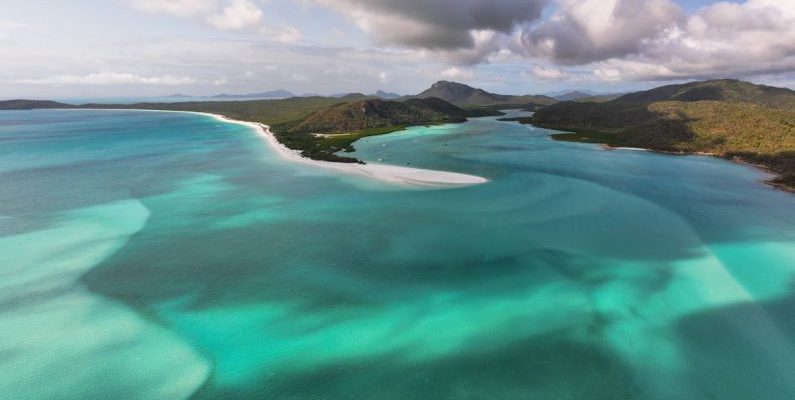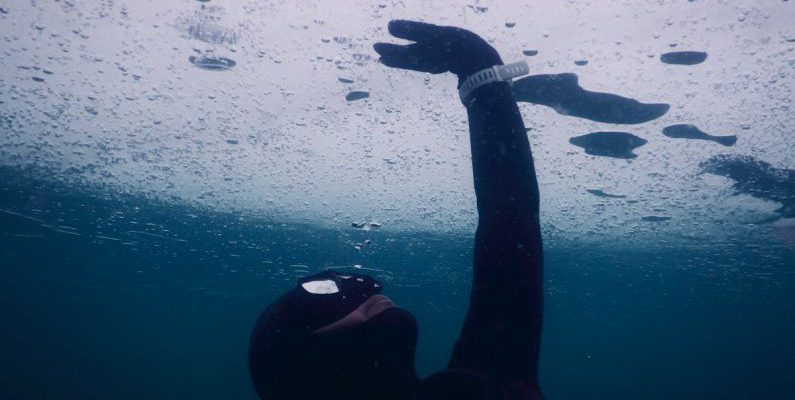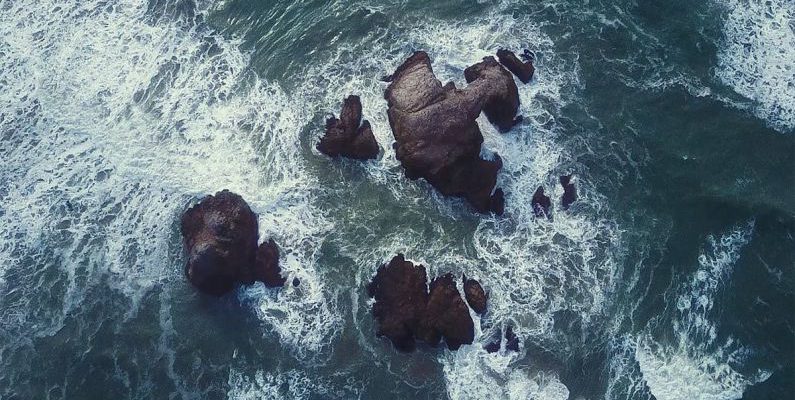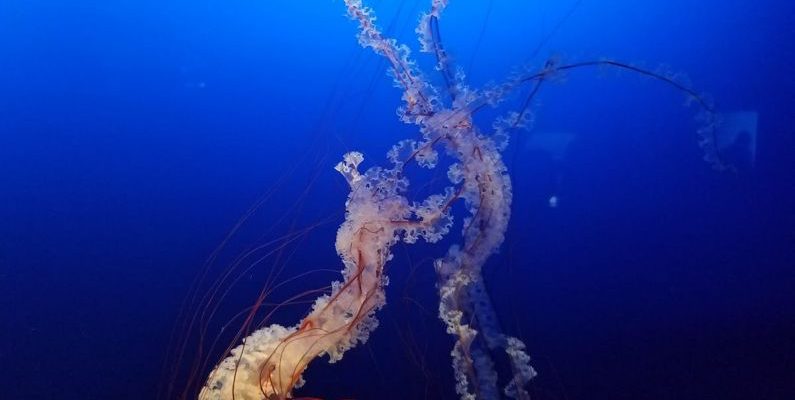Underwater photography is a captivating art form that allows photographers to explore the mesmerizing beauty of the underwater world. From vibrant coral reefs to mysterious shipwrecks, underwater photography offers a unique perspective that is both challenging and rewarding. Capturing stunning images beneath the surface requires a specialized set of skills, equipment, and a deep passion for the marine environment. In this article, we delve into the world of underwater photography, exploring the challenges, techniques, and rewards of pursuing this exhilarating craft.
**Diving into the Depths**
One of the key aspects of underwater photography is the need for scuba diving skills. As an underwater photographer, it is essential to be a competent diver in order to safely navigate the underwater environment and capture breathtaking images. Diving allows photographers to access remote and captivating underwater locations that are inaccessible to the average person. Whether exploring a vibrant coral reef teeming with marine life or documenting the haunting beauty of a sunken wreck, diving skills are crucial for capturing compelling underwater photographs.
**Mastering the Challenges**
Underwater photography presents a unique set of challenges that set it apart from traditional photography on land. The aquatic environment introduces factors such as limited visibility, buoyancy control, and the distortion of light and color underwater. Overcoming these challenges requires a combination of technical skill, creativity, and adaptability. Underwater photographers must be adept at adjusting camera settings on the fly, composing shots in dynamic underwater conditions, and working with natural light to create stunning images.
**Equipment Essentials**
The equipment used in underwater photography is specialized and essential for capturing high-quality images beneath the surface. A waterproof camera housing is necessary to protect the camera from water damage and allow for full control of camera functions underwater. Additionally, underwater photographers utilize strobes or video lights to illuminate subjects in the dimly lit underwater environment and bring out the vibrant colors of the underwater world. Other essential gear includes a dive computer for monitoring depth and dive time, as well as a sturdy dive mask to ensure clear vision while capturing images underwater.
**Techniques for Success**
Successful underwater photography requires a combination of technical skill, creativity, and patience. Understanding the principles of composition, lighting, and exposure is essential for capturing compelling underwater images. Utilizing techniques such as backlighting, silhouette shots, and close-up macro photography can add visual interest and depth to underwater photographs. Additionally, mastering the art of buoyancy control and underwater navigation is crucial for positioning oneself to capture the perfect shot.
**The Beauty Beneath**
Despite the challenges of underwater photography, the rewards are abundant for those who are passionate about capturing the beauty of the underwater world. From colorful coral reefs to majestic marine creatures, underwater photography offers a glimpse into a world that is both awe-inspiring and fragile. By documenting the wonders of the ocean through photography, underwater photographers play a vital role in raising awareness about marine conservation and the importance of preserving our oceans for future generations.
**Diving Deeper**
In conclusion, pursuing underwater photography is a thrilling and rewarding endeavor that allows photographers to explore the captivating beauty of the underwater world. By mastering the challenges, techniques, and equipment essential for underwater photography, photographers can capture stunning images that showcase the wonders of the ocean. Whether diving into the depths of a coral reef or exploring the mysteries of a sunken shipwreck, underwater photography offers a unique opportunity to connect with the marine environment and share its beauty with the world.
Author: diveholidayisle
Exploring the underwater world through scuba diving is a thrilling and exhilarating experience that allows you to witness the beauty of marine life up close. However, to ensure a safe and enjoyable diving experience, it is essential to have the right equipment and accessories. Packing the necessary travel accessories for scuba diving can make a significant difference in your overall diving experience. From essential safety gear to convenient gadgets, here are some must-have travel accessories for scuba diving that every diver should consider adding to their gear collection.
Safety First: Dive Computer
One of the most crucial accessories for scuba diving is a dive computer. This device not only tracks your dive time and depth but also helps you monitor your ascent rate to prevent decompression sickness. Having a dive computer eliminates the need for manual dive tables, making it easier to track your dive profile and stay within safe limits. Look for a dive computer that is easy to read underwater and offers features such as air integration and ascent rate monitoring for added safety.Stay Warm: Wetsuit and Dive Hood
Even in warmer waters, a wetsuit is essential for maintaining body temperature and protecting your skin from sunburn and stings. Choose a wetsuit thickness suitable for the water temperature of your dive destination to ensure maximum comfort underwater. Additionally, a dive hood can help prevent heat loss through your head and protect your ears from pressure changes. A well-fitted wetsuit and dive hood can make a significant difference in your diving experience, especially during longer dives or in colder waters.Clear Vision: Mask and Defogger
A high-quality dive mask with a comfortable fit and a wide field of vision is essential for enjoying the underwater scenery. Look for a mask that seals well against your face to prevent water leakage and provides a comfortable silicone skirt for a snug fit. To prevent your mask from fogging up during dives, consider using a defogging solution or gel. Applying a defogger before each dive can help maintain clear visibility and prevent distractions underwater, allowing you to focus on the marine life around you.Breathe Easy: Regulator and Spare Parts
Your regulator is a critical piece of scuba diving equipment that allows you to breathe underwater by delivering air from your tank. Regular maintenance and servicing of your regulator are essential to ensure optimal performance and reliability. It is also advisable to carry spare parts such as mouthpieces, o-rings, and regulator hoses in your dive bag in case of any unforeseen issues during a dive. Being prepared with spare parts can save you from missing out on a dive due to minor equipment malfunctions.Capture Memories: Underwater Camera
Documenting your underwater adventures with an underwater camera can help you preserve memories and share your experiences with others. Whether you prefer a compact point-and-shoot camera or a more advanced underwater DSLR, having a camera allows you to capture the vibrant colors and unique marine life you encounter during dives. Look for a camera with underwater housing that is waterproof and pressure-resistant to protect your device while diving. Remember to practice good buoyancy control and respect marine life when taking photos to minimize impact on the underwater environment.Organize Your Gear: Dive Bag
Keeping your scuba diving gear organized and protected while traveling is essential for a hassle-free diving experience. Invest in a durable dive bag with compartments for your fins, mask, snorkel, and other accessories to keep everything secure and easily accessible. Look for a bag that is water-resistant and has sturdy handles or wheels for convenient transport to and from dive sites. A well-designed dive bag can help you stay organized and ensure that your gear remains in top condition for your next dive adventure.Enjoy the Dive: Snorkel and Fins
Having a reliable snorkel and fins can enhance your diving experience by providing efficient propulsion and surface swimming capabilities. Choose snorkel gear that fits comfortably in your mouth and allows for easy breathing while at the surface. When selecting fins, consider the type of diving you will be doing, whether it's recreational, technical, or freediving, and choose fins that match your diving style and preferences. Properly fitting snorkel gear and fins can improve your comfort and mobility in the water, allowing you to focus on enjoying the beauty of the underwater world.In Summary
Packing the right travel accessories for scuba diving can make a significant difference in your overall diving experience. From safety gear like a dive computer to essentials such as a wetsuit and mask, each accessory plays a vital role in ensuring your comfort, safety, and enjoyment underwater. By investing in quality gear, staying organized, and being prepared for any situation, you can make the most of your scuba diving adventures and create lasting memories beneath the surface. So, before your next dive trip, make sure to check off these must-have accessories from your packing list and get ready for an unforgettable underwater experience.
In Eco Diving
Sharks are some of the most iconic and misunderstood creatures in the ocean. With their sleek bodies and sharp teeth, they have captured the fascination of humans for centuries. However, these apex predators are facing numerous threats that are pushing many species to the brink of extinction. The significance of shark conservation cannot be overstated, as these animals play a crucial role in maintaining the health of marine ecosystems.
Sharks: The Guardians of the Ocean
Sharks are often referred to as the "guardians of the ocean" due to their important role in maintaining the delicate balance of marine ecosystems. As apex predators, they help regulate the populations of other marine species, ensuring that the food chain remains in equilibrium. By preying on sick and weak individuals, sharks help to prevent the spread of disease and maintain the overall health of oceanic populations.The Decline of Shark Populations
Despite their vital role in the ecosystem, shark populations around the world are facing severe declines. One of the primary threats to sharks is overfishing, driven by the demand for shark fins, which are considered a delicacy in some cultures. Shark finning, the practice of cutting off a shark's fins and discarding the rest of the body at sea, is particularly devastating as it often results in the death of the animal. Another significant threat to shark populations is bycatch, where sharks are unintentionally caught in fishing gear targeting other species. This can result in high mortality rates for sharks, further contributing to population declines. Habitat destruction, pollution, and climate change are also impacting shark populations, making conservation efforts even more critical.The Importance of Shark Conservation
Shark conservation is essential not only for the survival of these magnificent creatures but also for the health of marine ecosystems as a whole. By protecting shark populations, we are safeguarding the balance of the ocean and ensuring the sustainability of fisheries. Healthy shark populations can help control the populations of prey species, preventing overgrazing of seagrass beds and coral reefs. Furthermore, sharks are a significant draw for ecotourism, providing economic benefits to coastal communities around the world. Shark diving and other forms of sustainable shark tourism can generate revenue and create jobs, offering an alternative to destructive fishing practices. By valuing sharks alive rather than dead, we can promote conservation efforts and raise awareness about the importance of protecting these animals.Challenges in Shark Conservation
Despite the importance of shark conservation, there are significant challenges that need to be addressed. One of the main obstacles is the lack of effective management and enforcement of regulations to protect shark populations. Many countries have weak or nonexistent laws regarding shark fishing, making it difficult to prevent overexploitation. Illegal, unreported, and unregulated (IUU) fishing also poses a major threat to shark populations, with many species being targeted for their fins or meat. International cooperation is crucial in combating IUU fishing and ensuring the sustainable management of shark fisheries. Additionally, public awareness and education play a vital role in changing attitudes towards sharks and promoting conservation efforts.Moving Forward: A Call to Action
In conclusion, the significance of shark conservation cannot be overstated. Sharks are essential to the health of marine ecosystems and play a crucial role in maintaining biodiversity. Protecting shark populations is not only a moral imperative but also an ecological necessity. By implementing sustainable fishing practices, enforcing regulations, and promoting conservation efforts, we can ensure a brighter future for sharks and the oceans they call home. It is up to each one of us to take action and be stewards of the ocean, ensuring that future generations can continue to marvel at these magnificent creatures.
In Dive Sites
The Great Barrier Reef, located off the coast of Queensland, Australia, is a scuba diver's paradise like no other. Spanning over 2,300 kilometers and encompassing thousands of individual reefs and hundreds of islands, this natural wonder is a UNESCO World Heritage Site and the world's largest coral reef system. Exploring the Great Barrier Reef underwater is a dream come true for many diving enthusiasts. Let's delve into why this iconic destination is a must-visit for scuba divers seeking an unforgettable experience.
Unparalleled Biodiversity
Diving into the crystal-clear waters of the Great Barrier Reef offers a glimpse into a vibrant underwater world teeming with life. With over 1,500 species of fish, 400 types of coral, and countless other marine creatures calling this reef system home, divers are treated to a kaleidoscope of colors and shapes unlike anywhere else on the planet. From tiny clownfish darting in and out of anemones to graceful sea turtles gliding through the water, every dive is a chance to encounter new and fascinating species.Thrilling Dive Sites
The Great Barrier Reef boasts a diverse range of dive sites suitable for all levels of experience, from novice divers to seasoned pros. Whether you're exploring shallow coral gardens teeming with marine life or descending into the depths to discover intricate coral formations and underwater caves, there is something for everyone. Sites like the Cod Hole, Osprey Reef, and the famous Ribbon Reefs offer unique underwater landscapes and encounters with large marine creatures like manta rays, sharks, and even minke whales during the winter months.Unique Coral Formations
One of the most captivating aspects of diving in the Great Barrier Reef is the chance to witness the intricate and diverse coral formations that make up this underwater wonderland. Soft corals sway gently in the current, while hard corals provide homes and hiding places for a plethora of marine creatures. Exploring the nooks and crannies of the reef reveals a mesmerizing array of shapes and colors, from delicate branching corals to massive brain corals that have been growing for centuries. Every dive brings a new appreciation for the beauty and importance of these fragile ecosystems.Conservation and Preservation
Despite its natural beauty, the Great Barrier Reef faces numerous threats, including climate change, pollution, and overfishing. Conservation efforts are crucial to ensuring the long-term health of this delicate ecosystem. Many dive operators in the region are committed to sustainable practices, such as reef-safe sunscreen use, responsible diving practices, and supporting research and conservation initiatives. By choosing eco-conscious operators and being mindful of our impact on the reef, divers can help protect this natural treasure for future generations to enjoy.Memorable Experiences
Diving in the Great Barrier Reef is not just about exploring underwater landscapes; it's also about creating unforgettable memories that will last a lifetime. Whether it's witnessing a school of colorful fish swirling around you, coming face to face with a curious reef shark, or simply feeling weightless as you drift along with the current, every dive offers a chance for adventure and discovery. The sense of awe and wonder that comes from immersing yourself in this underwater world is truly incomparable.Embracing the Spirit of Exploration
For scuba divers, the Great Barrier Reef represents the ultimate frontier for exploration and discovery. With so much of this vast ecosystem still unexplored and undiscovered, every dive holds the potential for new and exciting encounters. Whether you're a seasoned diver or just starting out, the Great Barrier Reef offers endless opportunities to learn, grow, and connect with the natural world in a way that is truly transformative. In conclusion, diving in the Great Barrier Reef is a bucket-list experience that offers unparalleled beauty, biodiversity, and adventure. With its unique coral formations, thrilling dive sites, and commitment to conservation, this underwater paradise has something to offer every diver, from the curious beginner to the seasoned pro. By immersing yourself in the wonders of the Great Barrier Reef, you're not just exploring a reef system – you're embarking on a journey of discovery and appreciation for the incredible diversity of life that inhabits our oceans.
In Gear Reviews
When it comes to cold water diving, having the right wetsuit can make all the difference in your comfort and safety underwater. The choice of wetsuit is crucial as it not only keeps you warm but also allows for flexibility and ease of movement. With a wide range of options available in the market, selecting the best wetsuit for cold water diving can be overwhelming. To help you make an informed decision, let's delve into the key factors to consider when choosing a wetsuit for cold water diving.
Understanding Wetsuit Thickness
One of the most critical factors to consider when selecting a wetsuit for cold water diving is the thickness of the material. Wetsuits are typically available in various thicknesses, ranging from 3mm to 7mm. The thickness of the wetsuit plays a significant role in determining how warm you will feel underwater. In colder water temperatures, a thicker wetsuit is essential to provide adequate insulation and keep your body temperature regulated. Conversely, in milder conditions, a thinner wetsuit may be more suitable.Material Quality and Durability
The material quality of the wetsuit is another essential aspect to consider. Opt for wetsuits made from high-quality neoprene material, as it offers excellent insulation properties and durability. Cheaper wetsuits may use lower-grade neoprene, which can wear out quickly and compromise its ability to keep you warm. Investing in a well-made wetsuit may cost more initially, but it will prove to be a wise investment in the long run, providing you with comfort and protection on your cold water dives.Seam Construction and Fit
The construction of seams in a wetsuit can significantly impact its comfort and performance. Flatlock seams are commonly found in wetsuits and are suitable for warmer water conditions. However, for cold water diving, consider wetsuits with sealed or blind-stitched seams. These types of seams prevent water from seeping into the wetsuit, keeping you warmer for longer periods underwater. Additionally, ensure that the wetsuit fits snugly to your body without being too tight or restrictive, as a proper fit is crucial for maintaining insulation and flexibility during dives.Choosing the Right Style
Wetsuits for cold water diving come in various styles, including full suits, shorty suits, and two-piece suits. Full suits provide maximum coverage and insulation, making them ideal for colder water temperatures. Shorty suits, on the other hand, offer less coverage and are suitable for milder conditions or for added mobility during dives. Two-piece suits consist of separate tops and bottoms, allowing for customization based on water temperature and personal preference. Choose a wetsuit style that best suits your diving needs and comfort level in cold water environments.Additional Features and Considerations
When selecting a wetsuit for cold water diving, consider additional features that can enhance your overall diving experience. Look for wetsuits with reinforced knee pads for added durability, as well as integrated hoods or thermal linings for extra warmth in chilly waters. Some wetsuits also come with zippered cuffs and ankles for easy donning and doffing, which can be convenient during dives. Take into account any specific preferences or requirements you may have, such as color choices or brand preferences, to ensure you select a wetsuit that meets all your needs. In conclusion, choosing the best wetsuit for cold water diving requires careful consideration of various factors, including thickness, material quality, seam construction, fit, style, and additional features. By taking the time to evaluate these aspects and select a wetsuit that aligns with your diving preferences and comfort level, you can enjoy a safe and enjoyable diving experience in cold water environments. Invest in a high-quality wetsuit that offers the right balance of insulation, flexibility, and durability, and you'll be well-equipped to explore the wonders of the underwater world even in the coldest of waters.
Drift diving is an exhilarating form of underwater exploration that allows divers to be effortlessly carried by the currents, providing a unique and thrilling experience. However, mastering drift diving requires a specific set of skills and knowledge to ensure safety and enjoyment in this dynamic environment. Whether you are a novice diver looking to expand your horizons or an experienced diver seeking new challenges, understanding the essentials of drift diving is crucial. In this article, we will delve into what you need to know to master the art of drift diving.
Navigating the Currents
One of the key aspects of drift diving is learning how to navigate the currents effectively. Unlike traditional diving where you have more control over your movement, drift diving requires you to go with the flow. It is essential to have a good understanding of the direction and strength of the currents before entering the water. By observing the surface conditions, such as wind patterns and tide movements, you can get a sense of how the currents are likely to behave underwater. When diving in a drift, it is important to maintain a streamlined body position to reduce drag and allow the current to carry you smoothly. Use your fins to make gentle adjustments to your direction and depth, rather than fighting against the current. By conserving your energy and going with the flow, you can enjoy a longer and more comfortable dive.Choosing the Right Gear
When it comes to drift diving, having the right gear can make a significant difference in your overall experience. Opt for a low-profile and streamlined dive equipment to minimize resistance in the water. A longer hose on your regulator can also be beneficial in case you need to share air with your buddy in challenging conditions. Additionally, consider using a surface marker buoy (SMB) to signal your position to the boat or other divers during drift dives. This can help ensure that you are easily visible on the surface, especially in areas with boat traffic. A good quality dive computer is also essential for monitoring your depth, time, and decompression limits in dynamic diving environments.Enhancing Your Buoyancy Skills
Buoyancy control is paramount in drift diving, as it allows you to maintain a stable position in the water column and avoid unintentional ascents or descents. Practice proper weighting and buoyancy adjustments to achieve neutral buoyancy, where you neither sink nor float, but hover effortlessly underwater. Fine-tuning your buoyancy skills will help you navigate the currents more effectively and conserve your energy throughout the dive.Mastering Underwater Communication
Effective communication is key to a safe and enjoyable drift diving experience, especially when diving in a group. Use hand signals to communicate with your dive buddy or group members, indicating your direction, air supply, and any potential hazards. Establish a pre-dive communication plan to ensure everyone is on the same page regarding the dive objectives and emergency procedures.Adapting to Changing Conditions
Drift diving often involves rapidly changing conditions, such as variable currents, visibility, and marine life encounters. Stay flexible and adaptable during your dives, being prepared to adjust your plan as needed. Keep a close eye on your surroundings and be mindful of potential hazards, such as sharp rocks or strong currents, to ensure a safe and enjoyable dive experience.Conclusion: Embracing the Thrill of Drift Diving
Mastering drift diving requires a combination of skills, knowledge, and experience to navigate the dynamic underwater environment effectively. By honing your navigation, gear selection, buoyancy, communication, and adaptability skills, you can enhance your drift diving abilities and unlock new underwater adventures. Embrace the thrill of drift diving and explore the mesmerizing world beneath the waves with confidence and excitement.
Nitrox, also known as enriched air nitrox (EANx), is a breathing gas mixture with a higher oxygen content than atmospheric air. Diving with nitrox has gained popularity among divers of all levels due to its various benefits and applications. Understanding the characteristics and advantages of nitrox can enhance the diving experience and improve safety underwater.
The Basics of Nitrox
Nitrox is composed of nitrogen and oxygen, like regular air, but in different proportions. While normal air consists of approximately 21% oxygen and 79% nitrogen, nitrox contains a higher percentage of oxygen, typically between 22% and 40%. The increased oxygen content in nitrox reduces the amount of nitrogen in the mixture, thereby decreasing the risk of nitrogen-related diving illnesses, such as decompression sickness.Benefits of Using Nitrox
1. Extended Bottom Time: One of the most significant advantages of diving with nitrox is extended bottom time. The reduced nitrogen levels in nitrox allow divers to stay underwater longer compared to diving with standard air. This extended bottom time can be particularly beneficial during repetitive dives or when exploring deeper dive sites. 2. Reduced Decompression Risks: Nitrox can help decrease the risk of decompression sickness, also known as "the bends," which can occur when nitrogen accumulates in the body tissues during a dive. By lowering the nitrogen exposure, divers using nitrox can minimize the likelihood of experiencing decompression-related issues, especially during repetitive or deep dives. 3. Faster Surface Intervals: Using nitrox can shorten the surface intervals required between dives. Since nitrox reduces the nitrogen load on the body, divers can enjoy shorter intervals between dives, allowing for more time spent exploring underwater environments. This benefit is particularly advantageous for divers on liveaboard trips or those looking to maximize their dive time during a single day. 4. Enhanced Safety Margin: The increased oxygen content in nitrox provides an added safety margin for divers, especially when diving within no-decompression limits. The reduced nitrogen levels make it easier for divers to manage their nitrogen exposure and adhere to safe diving practices, ultimately enhancing overall dive safety.Practical Applications of Nitrox
1. Recreational Diving: Nitrox is widely used in recreational diving settings, offering divers the opportunity to extend their bottom time and enhance safety during single dives or dive trips. Many dive operators now offer nitrox as an option for certified divers looking to optimize their underwater experience. 2. Technical Diving: Nitrox is also commonly utilized in technical diving, where divers explore more challenging environments beyond recreational limits. Technical divers often use custom nitrox blends to manage gas narcosis, reduce decompression obligations, and improve overall dive efficiency and safety. 3. Training and Certification: Many scuba diving agencies offer nitrox training and certification courses for divers interested in mastering the use of enriched air nitrox. These courses cover topics such as gas blending, oxygen exposure limits, and dive planning with nitrox, providing divers with the knowledge and skills to safely enjoy the benefits of diving with nitrox.Incorporating Nitrox Into Your Diving Routine
To incorporate nitrox into your diving routine, it is essential to undergo proper training and certification to ensure safe gas handling and dive planning practices. Consult with a certified nitrox instructor or dive center to learn more about the benefits and considerations of diving with nitrox and to determine the appropriate nitrox blend for your diving needs. Diving with nitrox can enhance your underwater adventures by offering extended bottom time, reduced decompression risks, faster surface intervals, and an enhanced safety margin. Whether you are a recreational diver looking to maximize your dive time or a technical diver exploring challenging environments, understanding nitrox and its benefits can elevate your diving experience and contribute to safer and more enjoyable dives.
Nestled within the striking landscapes of Thingvellir National Park in Iceland lies a hidden gem that invites adventure seekers and nature enthusiasts to explore a world unlike any other. Silfra, a rift formed by the separation of the North American and Eurasian tectonic plates, offers a unique opportunity for divers to immerse themselves in crystal clear glacial waters and witness the mesmerizing beauty of underwater landscapes. Diving in Silfra is not just an activity; it's an unforgettable experience that promises a journey into the heart of Iceland's natural wonders.
The Pristine Waters of Silfra
Silfra is renowned for its unparalleled water clarity, offering visibility that can reach up to 100 meters. As divers descend into the depths of the rift, they are greeted by waters so pure that the visibility creates an otherworldly experience. The glacial meltwater that fills Silfra has been filtered through underground lava fields for decades, resulting in water that is not only exceptionally clear but also incredibly pure. The sensation of floating weightlessly through this pristine environment is a feeling that cannot be replicated elsewhere.Navigating the Continental Divide
Diving in Silfra is a unique opportunity to traverse the space between two continents. The rift itself is a physical representation of the ongoing separation of the North American and Eurasian tectonic plates, providing divers with the chance to touch both continents simultaneously. As divers glide through the narrow canyons and crevices of Silfra, they are literally bridging the gap between two massive land masses, a truly awe-inspiring experience that highlights the dynamic forces shaping the Earth's surface.Encountering Geological Marvels
One of the most captivating aspects of diving in Silfra is the opportunity to witness the geological wonders that line the rift. From towering rock formations to intricate lava formations, the underwater landscape of Silfra is a testament to the power of geological processes. Divers can marvel at the vivid colors and textures of the rocks that line the rift, each formation telling a story of Iceland's turbulent geological history. Exploring these unique features adds an extra layer of intrigue to the diving experience, making every descent into Silfra a journey of discovery.Embracing the Chilling Thrill
Diving in Silfra is not for the faint of heart. The waters of the rift maintain a constant temperature of around 2°C (35.6°F) throughout the year, making it one of the coldest dive sites in the world. While the frigid temperatures may seem daunting, they add a thrilling element to the diving experience, creating a sense of exhilaration as divers descend into the icy depths. Proper thermal protection is essential for diving in Silfra, but the chill of the water is a small price to pay for the chance to explore this unique underwater realm.Reflecting Under the Midnight Sun
One of the most magical experiences that divers in Silfra can enjoy is witnessing the Northern Lights dance across the sky above. Iceland's proximity to the Arctic Circle means that during the summer months, the sun never fully sets, creating the phenomenon known as the Midnight Sun. Diving in Silfra under the soft glow of the Midnight Sun, with the Northern Lights occasionally making an appearance, is a surreal and breathtaking experience that adds an extra layer of magic to an already extraordinary adventure.In the Depths of Silfra
Descending into the depths of Silfra is a journey that transcends mere exploration; it is a soul-stirring experience that connects divers to the raw beauty and power of Iceland's natural world. The crystal clear waters, the geological marvels, and the thrill of navigating the continental divide all combine to create an unforgettable diving experience. For those seeking a truly unique and awe-inspiring adventure beneath the Northern Lights, Silfra in Iceland beckons with its icy waters and enchanting depths.
In Gear Reviews
When it comes to diving watches, the Suunto D5 is a popular choice among underwater enthusiasts. Known for its advanced features and sleek design, the Suunto D5 offers a range of functionalities that cater to both recreational divers and professionals alike. In this review, we will delve into the various aspects of the Suunto D5 and explore what sets it apart from other dive computers on the market.
Design and Build Quality
The Suunto D5 boasts a modern and stylish design that sets it apart from traditional dive computers. With a vibrant color display and customizable watch faces, the D5 combines functionality with aesthetics. The watch is constructed from high-quality materials, making it durable and able to withstand the rigors of underwater use. The sleek and lightweight design of the D5 ensures that it is comfortable to wear both in and out of the water.Features and Functionality
One of the standout features of the Suunto D5 is its wireless connectivity capabilities. The watch can be paired with the Suunto app on your smartphone, allowing you to transfer dive logs, customize settings, and receive notifications directly to your wrist. The D5 is also equipped with a 3D digital compass, making it easier to navigate underwater without the need for a separate compass device. The watch offers multiple diving modes, including air, nitrox, and gauge modes, catering to divers of all skill levels. The customizable dive modes allow you to tailor the watch to your specific diving needs, whether you are a beginner or an experienced diver. The Suunto D5 also features a built-in dive planner, which helps you plan your dives and ensure that you stay within safe limits.Ease of Use
Despite its advanced features, the Suunto D5 is remarkably user-friendly. The watch is equipped with intuitive menus and buttons that make it easy to navigate through the various settings and functions. The color display is clear and easy to read, even in low-light conditions, ensuring that you can easily access important information during your dives.Battery Life
One of the key considerations for any dive computer is its battery life. The Suunto D5 boasts an impressive battery life of up to 6-12 hours in dive mode, depending on your usage. The watch can be easily recharged using the included USB cable, ensuring that you can quickly power up the D5 between dives.Price and Value
While the Suunto D5 is priced at the higher end of the spectrum compared to other dive computers, its advanced features and build quality make it a worthwhile investment for serious divers. The watch offers a range of functionalities that cater to both recreational and professional divers, making it a versatile and reliable companion for underwater adventures. In conclusion, the Suunto D5 is a top-tier dive computer that combines cutting-edge technology with a sleek and stylish design. With its wireless connectivity, advanced features, and user-friendly interface, the D5 is a standout choice for divers looking for a reliable and versatile dive companion. Whether you are a beginner or an experienced diver, the Suunto D5 offers the functionality and performance you need to enhance your underwater experience.
In Eco Diving
In the world of scuba diving, a new trend is emerging – eco diving. This environmentally conscious approach to diving is gaining popularity among divers who want to explore the underwater world while minimizing their impact on marine ecosystems. So, what exactly is eco diving, and why is it important?
Understanding Eco Diving
Eco diving, also known as sustainable diving or green diving, involves practicing diving in a way that minimizes harm to the environment. This includes following guidelines and best practices to protect marine life, coral reefs, and other underwater habitats. Eco divers are committed to preserving the fragile balance of underwater ecosystems by taking proactive steps to reduce their carbon footprint and avoid damaging marine life.Choosing Eco-Friendly Dive Operators
One of the key aspects of eco diving is selecting dive operators that prioritize sustainability and environmental conservation. Eco-friendly dive operators adhere to strict guidelines to ensure that their activities have minimal impact on the marine environment. They may participate in coral reef restoration projects, marine conservation initiatives, and beach cleanups to help protect the oceans and promote ecological awareness.Protecting Marine Life
Eco divers are passionate about protecting marine life and preserving biodiversity in the oceans. They follow responsible diving practices, such as maintaining a safe distance from marine animals, avoiding touching or disturbing coral reefs, and never feeding fish or other marine creatures. By respecting the natural behavior of marine life and observing from a distance, eco divers can enjoy unforgettable encounters with underwater wildlife while safeguarding their habitats.Reducing Plastic Pollution
Plastic pollution is a major threat to marine ecosystems, with millions of tons of plastic waste entering the oceans each year. Eco divers are committed to reducing plastic pollution by using reusable water bottles, eco-friendly dive gear, and biodegradable sunscreen. They also participate in underwater cleanups to remove plastic debris and other waste from the ocean floor, helping to protect marine life from the harmful effects of plastic pollution.Promoting Environmental Awareness
Eco diving is not just about following guidelines and best practices – it's also about raising awareness and inspiring others to take action to protect the oceans. Eco divers are passionate advocates for marine conservation, sharing their knowledge and experiences to educate others about the importance of preserving underwater ecosystems. By promoting environmental awareness, eco divers hope to inspire more people to become stewards of the ocean and work together to protect our planet's precious marine resources.Supporting Sustainable Tourism
Eco diving is part of a larger movement towards sustainable tourism, which aims to minimize the environmental impact of travel and promote responsible tourism practices. By choosing eco-friendly dive operators and supporting sustainable initiatives, eco divers can help reduce the negative effects of tourism on marine ecosystems and support local communities that depend on the oceans for their livelihoods. Sustainable tourism benefits both the environment and the economy, creating a win-win situation for all stakeholders involved.Conclusion: Embracing Eco Diving for a Sustainable Future
Eco diving offers a unique opportunity to explore the wonders of the underwater world while making a positive impact on the environment. By choosing eco-friendly dive operators, protecting marine life, reducing plastic pollution, promoting environmental awareness, and supporting sustainable tourism, eco divers can help preserve our oceans for future generations to enjoy. Embracing eco diving is not just a choice – it's a responsibility to protect our planet's most precious natural resources and ensure a sustainable future for all.
Scuba diving is a thrilling experience that allows you to explore the underwater world and witness the beauty of marine life up close. However, one of the key challenges that divers face is managing their air consumption efficiently to prolong their time underwater. Improving your air consumption underwater is essential not only for extending your dive time but also for enhancing your overall diving experience. By employing some simple techniques and strategies, you can enhance your breathing control and optimize your air consumption during dives.
**Mastering Buoyancy Control**
Achieving proper buoyancy control is crucial for conserving air while diving. When you are properly weighted and able to maintain neutral buoyancy, you expend less energy and air trying to stay at the desired depth. Practice controlling your buoyancy by making small adjustments with your BCD and breathing. Avoid overinflating or deflating your BCD, as this can lead to unnecessary air loss and fluctuations in depth. By mastering buoyancy control, you can move effortlessly through the water and minimize your air consumption.
**Slow and Steady Breathing**
One of the most effective ways to improve your air consumption underwater is to focus on slow, deep breathing. Rapid, shallow breaths can cause you to use up your air supply quickly and increase your risk of hyperventilation. Instead, practice breathing slowly and steadily, taking deep inhales and exhales. This technique not only conserves air but also promotes relaxation and reduces stress while diving. By maintaining a calm breathing rhythm, you can extend your dive time and enjoy a more peaceful underwater experience.
**Reduce Exertion and Movement**
Excessive movement and exertion can significantly impact your air consumption while diving. Avoid unnecessary kicking and flailing, as this can cause you to burn through your air supply faster. Instead, focus on using efficient fin strokes and gentle movements to propel yourself through the water. Minimize sudden changes in direction and pace to conserve energy and air. By reducing exertion and movement, you can maintain a steady breathing rate and optimize your air consumption during dives.
**Stay Warm and Relaxed**
Staying warm and relaxed while diving can help improve your air consumption underwater. Cold water can cause your body to work harder to maintain its temperature, leading to increased air consumption. Wear appropriate exposure protection to stay warm and comfortable throughout your dive. Additionally, practice relaxation techniques such as mindful breathing and visualization to calm your mind and body underwater. By staying warm and relaxed, you can conserve energy, reduce stress, and enhance your breathing control while diving.
**Monitor Your Depth and Air Supply**
Keeping track of your depth and air supply is essential for managing your air consumption effectively. Maintain awareness of your depth using your dive computer or depth gauge, and avoid descending deeper than planned. Ascend slowly and perform safety stops to off-gas nitrogen and prevent decompression sickness. Regularly check your air gauge to monitor your remaining air supply and plan your dive accordingly. By staying informed and prepared, you can avoid running out of air prematurely and ensure a safe and enjoyable dive.
**Conclusion: Dive Smarter, Breathe Better**
Improving your air consumption underwater is a skill that can enhance your diving experience and allow you to explore the underwater world more efficiently. By mastering buoyancy control, practicing slow and steady breathing, minimizing exertion, staying warm and relaxed, and monitoring your depth and air supply, you can optimize your air consumption and extend your dive time. Dive smarter, breathe better, and enjoy longer, more fulfilling dives beneath the surface.
**Finding Nemo: An Adventure in the Great Barrier Reef**
The Great Barrier Reef is a mesmerizing underwater world teeming with vibrant marine life, crystal-clear waters, and breathtaking coral formations. One of the most iconic and beloved animated films that beautifully captures the magic of this enchanting ecosystem is Disney-Pixar's "Finding Nemo." Join us on an exciting journey as we delve into the wonders of the Great Barrier Reef through the lens of this timeless tale.
**Exploring the Coral Wonderland**
Dive into the depths of the Great Barrier Reef, a UNESCO World Heritage Site and the largest coral reef system on the planet. Just like Marlin, the overprotective clownfish father, embark on a quest to find his son, Nemo, who gets separated from him in the vast ocean. As you traverse the maze of colorful coral gardens and swim alongside an array of exotic sea creatures, you'll be captivated by the sheer beauty and diversity of this underwater paradise.
**Meeting Memorable Characters**
Encounter a host of unforgettable characters that call the Great Barrier Reef home, much like Nemo's quirky companions in the film. From the laid-back sea turtle Crush to the forgetful but lovable Dory, each creature you encounter will leave a lasting impression on your heart. Just like in the movie, you'll forge friendships with sea turtles, sharks, and other marine animals that showcase the importance of unity and acceptance in the face of adversity.
**Navigating Challenges and Overcoming Fears**
As you navigate the intricate coral labyrinths and dodge potential dangers lurking in the shadows, you'll resonate with Marlin's journey to overcome his fears and insecurities. Like him, you'll learn the value of perseverance, courage, and the unbreakable bond between a parent and child. Through your own challenges and triumphs in the Great Barrier Reef, you'll discover newfound strength and resilience that will guide you through life's uncertainties.
**Protecting the Fragile Ecosystem**
While immersing yourself in the wonders of the Great Barrier Reef, you'll witness firsthand the delicate balance of this marine ecosystem and the threats it faces from human activities. Just like the characters in "Finding Nemo," you'll realize the importance of conservation efforts to preserve this natural wonder for future generations. By taking action to reduce your environmental impact and support sustainable practices, you can play a vital role in safeguarding the biodiversity of the Great Barrier Reef.
**Embracing the Spirit of Adventure**
Ultimately, "Finding Nemo" serves as a poignant reminder of the power of love, friendship, and the spirit of adventure that resides within us all. As you explore the depths of the Great Barrier Reef, embrace the thrill of discovery, the joy of exploration, and the wonder of the unknown. Allow yourself to be swept away by the magic of this enchanting world, where every moment is a chance to embark on a new adventure and create lasting memories that will stay with you long after you resurface.
**In Summary**
Embarking on an adventure in the Great Barrier Reef is a transformative experience that mirrors the timeless tale of "Finding Nemo." Through exploring the coral wonderland, meeting memorable characters, navigating challenges, and protecting the fragile ecosystem, you'll discover the true essence of adventure and the importance of cherishing our natural world. So, dive deep, embrace the unknown, and let the magic of the Great Barrier Reef enchant you as you embark on your own unforgettable journey.
